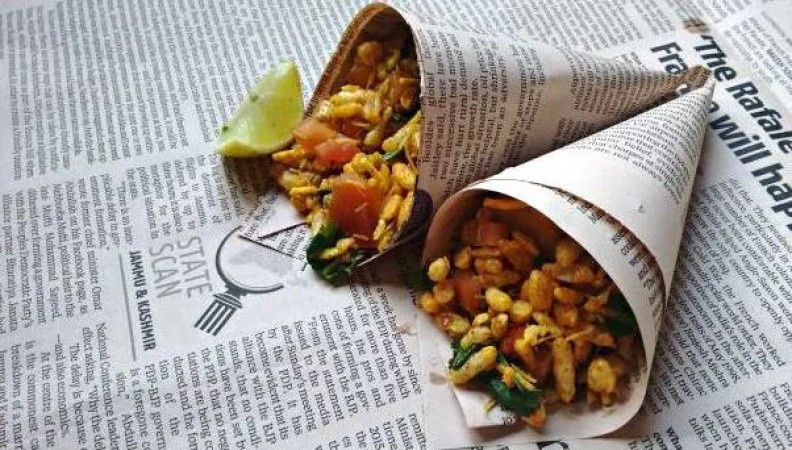
In today's fast-paced world, convenience often takes precedence over safety when it comes to food consumption. One concerning practice that has gained traction in some places is the use of newspapers as food wrappers. While it might seem harmless on the surface, this seemingly innocuous habit can have serious health implications. In this article, we delve into the risks associated with eating food wrapped in newspaper and why it should be avoided at all costs.
Food wrapped in newspapers may appeal to some due to its nostalgic and rustic aesthetic. The idea of unwrapping a package to reveal a delicious meal is undeniably charming. It reminds us of simpler times when such practices were common. However, this charm hides a potentially dangerous reality.
Newspapers are readily available and cost less than traditional packaging materials. For street vendors and small food businesses, using newspaper as a wrapping option can be a cost-saving measure. However, this cost-effectiveness can come at a great price in terms of health.
Some argue that using newspapers is more environmentally friendly than plastic wrap or styrofoam. They view it as a way to repurpose old newspapers and reduce the use of non-biodegradable materials. While environmental consciousness is admirable, it should not overshadow the critical issue of food safety.
Despite the apparent advantages, using newspapers as food wrappers poses significant health hazards. Let's explore these dangers in detail.
Newspapers use ink that contains toxic chemicals, such as lead and cadmium. These heavy metals are hazardous to human health and can have severe long-term consequences when ingested.
When food comes into direct contact with the ink, there is a risk of ingesting these harmful substances. This risk is especially high when the food is moist or oily, as it can facilitate the transfer of ink to the food.
Newspapers are porous and can easily trap moisture, creating an ideal environment for the growth of harmful bacteria. Moisture from the food can seep into the newspaper, providing a breeding ground for pathogens.
Consuming food wrapped in newspaper increases the risk of foodborne illnesses, such as salmonella and E. coli. These bacteria thrive in moist environments and can multiply rapidly, leading to severe cases of food poisoning.
Newspapers may have been in contact with various surfaces before being used for wrapping food. They could have been placed on the ground, handled by multiple people, or exposed to unsanitary conditions. This increases the likelihood of the newspaper being contaminated with pathogens.
When food is wrapped in a contaminated newspaper, it can lead to cross-contamination, where pathogens from the newspaper contaminate the food. Even if the food was initially safe, the newspaper can introduce harmful microorganisms.
Ingesting toxins or harmful bacteria from newspaper-wrapped food can lead to a range of digestive problems. These may include abdominal pain, diarrhea, and bloating. These symptoms can be uncomfortable and distressing.
Foodborne illnesses can cause nausea and vomiting, further compromising your health. These symptoms are not only unpleasant but can lead to dehydration and a weakened immune system.
Repeatedly consuming food in contact with newspaper ink can lead to chronic health issues over time. Prolonged exposure to toxic chemicals can result in serious conditions, including organ damage.
Children, in particular, are vulnerable to the harmful effects of ingested toxins. Their developing bodies and immune systems make them more susceptible to the adverse health impacts of newspaper ink contamination.
Opt for food-grade packaging materials designed to ensure food safety. These materials are specifically manufactured to prevent contamination and protect the integrity of the food.
Choose environmentally friendly options like biodegradable or reusable wraps. These alternatives allow you to maintain your commitment to sustainability while prioritizing food safety.
Prioritize hand hygiene when handling food to reduce the risk of contamination. Washing your hands thoroughly with soap and water before and after handling food is essential in preventing foodborne illnesses.
Ensure food is cooked thoroughly to kill any potential pathogens. Cooking at the right temperature for the right duration is crucial for food safety. In conclusion, while using newspapers as food wrappers may seem like a convenient and cost-effective choice, it comes with significant health risks. The toxic ink, potential microbial growth, and transfer of pathogens make this practice unsafe. To safeguard your health and that of your loved ones, it's essential to opt for food-grade packaging materials and prioritize proper food handling and hygiene. Remember, a small choice can make a big difference in your well-being. Don't compromise your health for the sake of aesthetics or convenience.
Delhi Metro Commuters to Enjoy Enhanced Convenience with WhatsApp Ticketing Service, and More